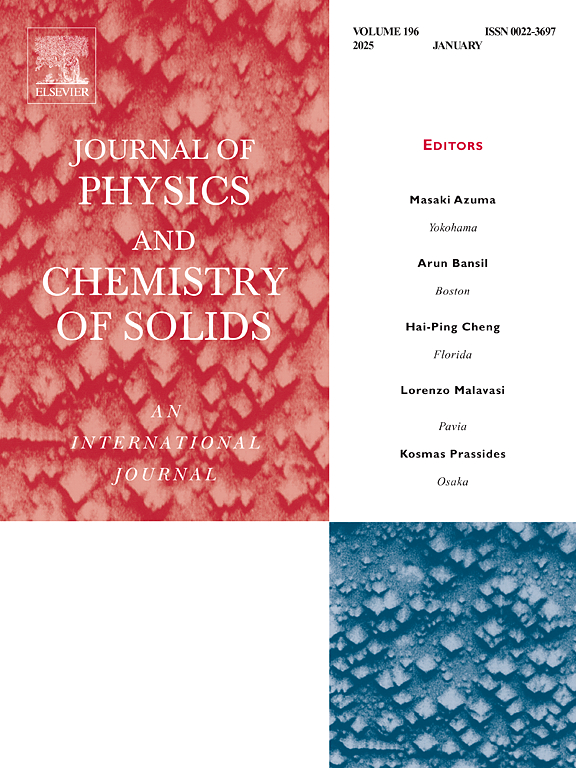Impact of Coulomb interactions on the phase transition and electronic structure of Ba2N electride under pressure: A DFT+U+V approach
IF 4.3
3区 材料科学
Q2 CHEMISTRY, MULTIDISCIPLINARY
引用次数: 0
Abstract
We study the electronic structure of the low-dimensional electride BaN to resolve discrepancies between density functional theory (DFT) predictions and experimental observations of pressure-induced phase transitions. According to the DFT calculations, there is no transition from the symmetry metallic phase to the phase, while in the experiment this transition is observed at 7 GPa. Using the density functional perturbation theory (DFPT) method, we have calculated the and parameters of the on-site and inter-site Coulomb interactions. Subsequently, applying the DFT+U+V method, we have found that taking into account the local and non-local interactions allows us to reproduce the metal-semimetal transition and to establish the energy balance that provides the structural transformation from to observed in the experiment. Therefore, the Coulomb interactions between the electrons, located predominantly in the interstitial voids, are important and lead to a qualitative change in the band structure and to the opening of an indirect gap in the subband corresponding to the electride states.
求助全文
约1分钟内获得全文
求助全文
来源期刊
CiteScore
7.80
自引率
2.50%
发文量
605
审稿时长
40 days
期刊介绍:
The Journal of Physics and Chemistry of Solids is a well-established international medium for publication of archival research in condensed matter and materials sciences. Areas of interest broadly include experimental and theoretical research on electronic, magnetic, spectroscopic and structural properties as well as the statistical mechanics and thermodynamics of materials. The focus is on gaining physical and chemical insight into the properties and potential applications of condensed matter systems.
Within the broad scope of the journal, beyond regular contributions, the editors have identified submissions in the following areas of physics and chemistry of solids to be of special current interest to the journal:
Low-dimensional systems
Exotic states of quantum electron matter including topological phases
Energy conversion and storage
Interfaces, nanoparticles and catalysts.

 求助内容:
求助内容: 应助结果提醒方式:
应助结果提醒方式:


